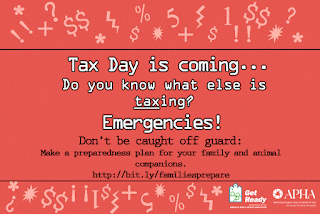It makes sense that April 16 is National Stress Awareness Day, a time for people to assess their stress and make plans to address it. Luckily, planning for disasters is one thing that doesn’t have to be stressful. More planning means less stress when an emergency occurs.
With that in mind, APHA’s Get Ready campaign is here to make your disaster planning easy:
- Step 1: Know the risks in your area. There is no such thing as a one-size-fits-all approach when it comes to preparedness. Different regions have different risks. If you live in southern California, it makes sense to be more prepared for earthquakes and wildfires than snowstorms. You never know what might happen, though, so sign up for emergency alerts to be notified when an emergency happens.
- Step 2: Make an emergency plan for your household. Be sure everyone knows what to do, where to go and how to get in touch with each other during an emergency. It’s also a good idea to work together with members of your community.
- Step 3: Assemble your emergency supplies. Think about your family’s specific needs and plan accordingly. You know you’ll need food, water and first-aid supplies, but don’t forget extra litter for kitty, hearing aid batteries for grandma or allergy meds for junior. Also, be sure and create a “go-bag” that you can easily grab in a hurry.
- Step 4: Practice! Make sure you know your evacuation routes, the locations of all your supplies and your emergency meeting locations.
Four steps later and you’re a pro! Being prepared for a disaster can help lower stress during a high-intensity time. After all, protecting your mental health is good for preparedness.
Check out the Get Ready site for even more easy planning materials.


No comments:
Post a Comment